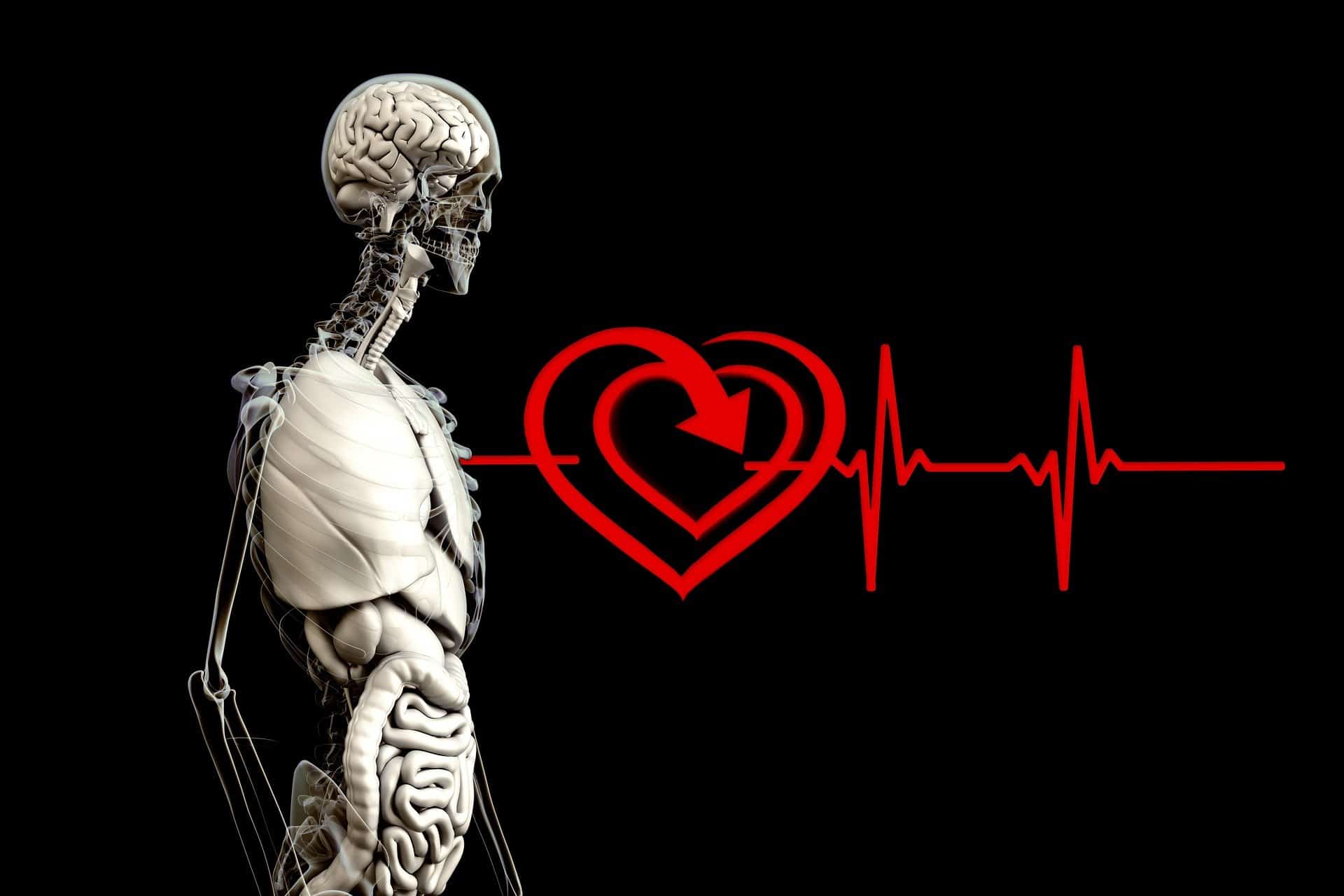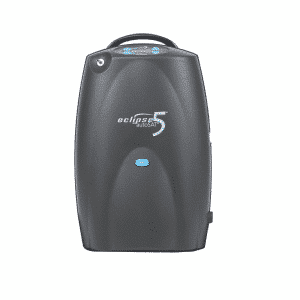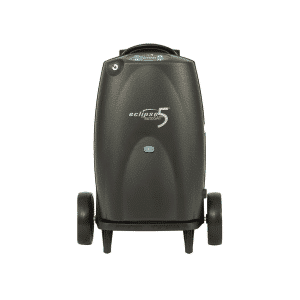What is an oxygen concentrator and what is it used for?
The oxygen concentrator is a medical device that provides low-flow oxygen therapy to patients with respiratory failure. The oxygen concentrator is a device for patients who require this treatment at home.
Oxygen machines take in ambient air and transform it into pure oxygen which, by filtering out nitrogen, causes the air breathed through these medical devices to contain a higher percentage of oxygen than the 21% normally found in the environment.
The absorbed air is compressed inside and pumped out already transformed into oxygen as the patient needs it. They are, therefore, devices that help to perform oxygen therapy at home, the use of these devices must be prescribed by a doctor.
What an oxygen concentrator is for
The most common uses or prescriptions for this device in the outpatient or home medical setting occur in the treatment of diseases that cause low blood oxygen levels, such as emphysema, severe asthma attacks, heart failure, chronic obstructive pulmonary disease, pneumonia and COVID-19.
Oxygen is the most important nutrient for life, and patients with breathing difficulties cannot get enough oxygen to their lungs, and when the blood, brain and entire system are not adequately oxygenated, their lives are in danger.
In these cases, doctors usually prescribe oxygen concentrators for home use, so that patients can breathe at a normal rate by getting enough oxygen to their lungs
Measuring the oxygen level in the blood
The oxygen level has always been essential not only in cases of asthma, lung cancer or COPD (chronic obstructive pulmonary disease), or the very common cases of bronchospasm and bronchiolitis in children, which can lead to pneumonia.
Therefore, regular measurement is a form of monitoring that should become routine, and in recent years there has been an increase in the use of small blood pressure monitors for home use.
How does an oxygen concentrator work?
In case of respiratory disease, if an oxygen concentrator is needed, the supply occurs in two ways: each time the user inhales, based on what is called a person’s breathing rate or in the form of a pulse dose, the oxygen concentrator takes into account the amount of oxygen the user needs.
His ensures that the patient is receiving the amount of oxygen needed for the activity they are doing at the time. For example, sleeping requires less oxygen than walking and other daily activities.
However, a more efficient solution for patients who require continuous oxygen supply is considered to be the pulse dose, and through a portable oxygen concentrator for convenience.
The oxygen concentrator captures ambient air and passes it through zeolite filters, separating nitrogen from oxygen and enriching the air by up to 45%.
Oxygen concentrators use continuous oxygen flow systems to supply air with a higher oxygen content. Although there are different models, each according to the wide range of therapeutic pressures and breathing quality of the individual, they all perform the same basic function.
Other features unique to each model of oxygen concentrator, yet very useful, include temperature control, ease of use, automatic leak compensation and mechanised start-stop.
Oxygen from the concentrators is delivered through a nasal cannula or mask that connects directly to the patient’s nasal passages.
However, there are some tips to keep in mind when using a mechanical device:
– It is important to avoid contact of the concentrator with cigarettes or flames, as this is a highly flammable object.
– The concentrator should only have a one-way valve. A one-way valve prevents oxygen from flowing back into the machine.
How to choose a concentrator
The choice of an oxygen concentrator should be guided by a specialised professional to ensure that your medical needs are adequately met.
- Medical prescription: The first step in choosing an oxygen concentrator is to obtain a prescription from your doctor, as discussed above. The doctor will determine how much oxygen you need, what flow rate, and how long per day, which is critical to selecting the right concentrator.
- Type of concentrator: There are stationary concentrators, designed for use at home, and portable concentrators, ideal for people on the move. The choice depends on your lifestyle and needs.
- Oxygen capacity: You should select a concentrator that can deliver the amount of oxygen you need. Concentrator capacity is measured in litres per minute (LPM).
- Battery life: If you choose a portable concentrator, pay attention to the battery life. Make sure it is sufficient for your daily outings and activities.
- Size and weight: Oxygen concentrators vary in size and weight. If you need mobility, opt for a lightweight and compact model.
- Ease of use: Choose a concentrator that is easy to use. This includes ease of changing settings, reading the display, cleaning and maintaining the equipment.
- Noise: Some hubs can be noisy. If this may be a problem for you, look for quieter models.
- Reliability and warranty: Opt for a hub from a reliable brand with good reviews. Also, make sure the hub comes with a warranty in case of problems.
- Service and support: It is important to have good customer service from the hub supplier, both for questions and troubleshooting.
- Price and financing: Finally, consider the price of the hub and whether financing options are available.
Benefits of using a concentrator
- They help to reduce the sensation of shortness of breath: when people have problems with the amount of oxygen in their blood, they feel more fatigued during daily activities. These devices help to achieve better quality breathing thanks to the concentration of oxygen.
- They are portable: you can take them with you everywhere, their main advantage is the ease of transport, such as shopping or going to the park.
- They do not run out: Unlike an oxygen tank, they do not run out because they take oxygen from the air.
- They allow you to exercise: with more oxygen, it is the necessary help to be able to do (low intensity) sport without getting so tired.
- They improve the quality of sleep: by providing the necessary amount of blood during the day, the quality of sleep will be better. Moreover, if the doctor prescribes it, it can also be combined with the treatment of Sleep Apnoea.
- They give independence: you can do many things on your own without needing help.
- They save money: although they can be expensive at first, in the long term they are cheaper than buying oxygen tanks.
- Improve everyday life: with an oxygen concentrator, you can do many things you couldn’t do before and feel better in your everyday life.
What is the difference between oxygen concentrators and oxygen tanks?
Unlike oxygen tanks or oxygen balloons, which contain a certain amount of compressed gas, concentrators use electric pumps to concentrate the oxygen in the air for a continuous supply to the patient.
The ideal way to maintain good levels of oxygen in the blood in a healthy person is to do regular sport to keep your respiratory and circulatory system in good condition, as well as to maintain healthy eating habits and progressively reduce the consumption of saturated fats, refined sugars and alcohol.
Types of oxygen concentrators
There are several types of oxygen concentrator equipment used in the medical industry and in the home to deliver oxygen to people in need.
The most common ones:
- Stationary oxygen concentrator: this type of concentrator is used at home or in hospitals and clinics. It is designed to operate continuously and provide a constant flow of oxygen.
- Portable oxygen concentrator: This type of concentrator is smaller and lighter than the stationary type, making it easier to transport. It is used to provide oxygen to people who need to be on the move, such as those with chronic lung diseases.
Portable oxygen concentrators
The portable oxygen concentrator improves the quality of life of patients, allowing them to be more active and more relaxed while receiving therapy, as they are nowadays more compact, lighter and emit little noise allowing to have an oxygen machine at home to perform therapy in a very comfortable way.
Portable oxygen machines are battery operated, which increases portability and allows the patient to keep moving while using it, without any type of restriction.
If you are considering where to buy a portable oxygen concentrator and its price you are in the right place. At CPAP Therapy we have a wide range of devices to apply respiratory therapies.
Follow-up on the use of the concentrator
Steps required for a concentrator
- Medical evaluation: Your doctor may perform a test called an arterial blood gas test. This test measures how much oxygen is in your arterial blood.
- Diagnosis: With arterial blood gases, your doctor can diagnose hypoxaemia, which means that the level of oxygen in your blood is lower than usual.
- Prescription of the oxygen concentrator: your doctor can prescribe a stationary oxygen concentrator for at home or a portable one for outdoors.
- Obtaining the oxygen concentrator: You can take your doctor’s report and prescription to a medical equipment supplier. They will offer you different oxygen concentrators with their advantages, prices etc. and show you how to use it.
- Medical follow-up: Once you start using the oxygen concentrator, you will have follow-up appointments with your doctor, to make sure that the oxygen concentrator is helping you and if necessary make adjustments.
What is it like to adapt to living with a concentrator?
It is always important to follow the instructions of your doctor and respiratory therapist when using an oxygen concentrator.
- Understanding: First, it is important to understand how the oxygen concentrator works and what it is used for. Make sure you understand in detail what your doctor or respiratory therapist explains in detail.
Familiarisation: Get used to the feeling of having the nasal cannula or oxygen mask. It may be uncomfortable at first, but over time you will get used to it.
Mobility: If you have a portable concentrator, practice moving around with it. Learn how to carry it safely and comfortably, whether in your hand, on your shoulder or in a backpack.
- Routine: Establish a routine for use. You should use your oxygen concentrator as directed by your doctor, which may be throughout the day or only during certain activities.
- Cleaning and maintenance: Be sure to clean and maintain your concentrator according to the manufacturer’s instructions. This will help prolong its life and ensure it works properly.
- Safety: Remember safety precautions. Do not smoke or allow others to smoke near you while using the concentrator. Also, keep the concentrator away from heat sources.
- Emotional support: It can be an emotionally challenging change. Don’t hesitate to seek information from people already using an oxygen concentrator who can explain their experience and how they have adapted to this supplemental oxygen machine.
- See your doctor: If you experience any problems with your concentrator or if your symptoms worsen, contact your doctor immediately.
- Physical activity: Even if you are using an oxygen concentrator, try to be as physically active as possible. This can help improve your overall health and breathing capacity.
- Patience: Finally, be patient with yourself. Adjusting to living with an oxygen concentrator can take time, but with practice and support, you can lead a normal, active life.
Is it advisable to use the concentrators during physical activity?
Yes, oxygen concentrators can be used during physical activity, and in fact, it is quite common to do so. Portable oxygen concentrators are especially useful for this, as they are smaller and easier to carry than stationary concentrators.
If a person has a medical condition that makes it difficult to get enough oxygen during exercise, the use of a concentrator may allow them to do physical activity more comfortably and for longer periods of time. This can be particularly useful for people with chronic obstructive pulmonary disease (COPD), heart failure and other conditions that can make breathing difficult.
However, it is important to remember that any exercise programme must be approved by a doctor. Exercise can increase the body’s demand for oxygen, and what is safe and beneficial for one person may not be for another.
Before starting a new exercise programme or increasing the intensity of your current physical activity, consult your doctor.
Also, when using an oxygen concentrator during exercise, it is important to follow the device’s instructions for use and maintenance. Make sure the battery is charged and carry a spare nasal cannula or mask with you, just in case.
Common problems with concentrators
- Low oxygen flow: this may indicate a problem with the compressor or the zeolite filters in the concentrator.
- Excessive noise: if the concentrator is too noisy, there may be a problem with the fan motor.
- The concentrator does not turn on: This may be caused by a problem with the power cord, the power switch or a blown fuse.
- Alarm sounding: Concentrators have alarms to indicate various problems, such as low oxygen concentration, high temperature or low airflow.
- Overheating: If the concentrator gets too hot, there could be a problem with the internal fan.
- Air leaks: Air leaks can occur at the hose connections or at the cannula.
- Battery problems: For portable concentrators, the battery may not charge properly or last as long as it should.
- Low oxygen concentration: If the concentrator is not producing enough oxygen, there may be a problem with the zeolite filters.
- Humidifier problems: Some concentrators have built-in humidifiers that may be leaking or not working properly.
- Cannula problems: The cannula may become clogged, kinked or leaky, making it difficult to deliver oxygen.
If you experience any problems with your oxygen concentrator, you should contact your medical equipment supplier or a healthcare professional to get it fixed. Never attempt to repair the concentrator yourself, as this could be dangerous and may invalidate the equipment warranty.
Concetrators
Clinic TERAPIACPAP
Latest posts by Clinic TERAPIACPAP (see all)
- Sleep apnea with other illnesses - 28/01/2024
- What is an oxygen concentrator and what is it used for? - 30/05/2023








